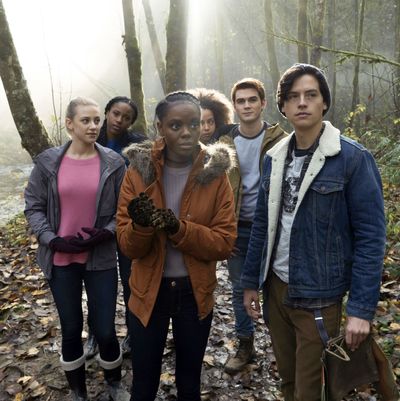
“Our story is about a town, a small town, and the people who live in the town,” narrates Jughead in Riverdale’s opening lines. “I’m Breakfast at Tiffany’s,” Veronica tells Archie and Betty, “but this place is strictly In Cold Blood.” Yet as Betty and Jughead muckrake town secrets and Archie gains the confidence of Veronica’s mob family, the Riverdale we see week after week does not seem so tiny. How is it possible that the town isn’t big enough to support a single drive-in movie theater, yet Riverdale teenagers are a significant market for the party drug jingle jangle? When Sheriff Keller doesn’t call in reinforcements from the state police or the FBI to investigate the Black Hood’s killing spree, does that mean Riverdale is large enough to have its own homicide unit? The town’s mysteries go deeper than the buried secrets in Pickens Park, and so we decided to investigate a pressing question: Just how big is Riverdale?
Geography
Our first set of clues comes from the terrain of Riverdale itself, especially along the banks of the rolling Sweetwater River. Even if the downtown area is small, the town must encompass a wide landscape to have such a diverse river basin.
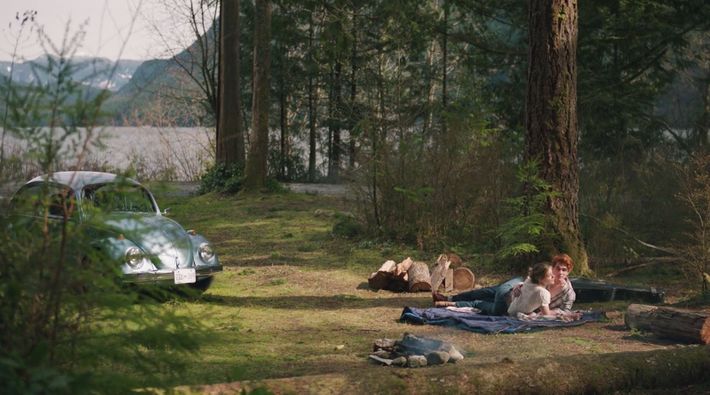
When Archie and Ms. Grundy find a calm spot on the banks for a picnic, they look across the water to the mountains.
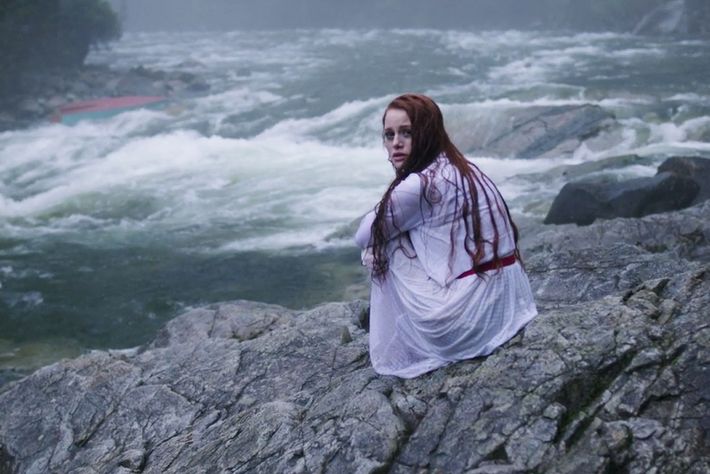
Cheryl and Jason float down the river … until they hit the rapids.
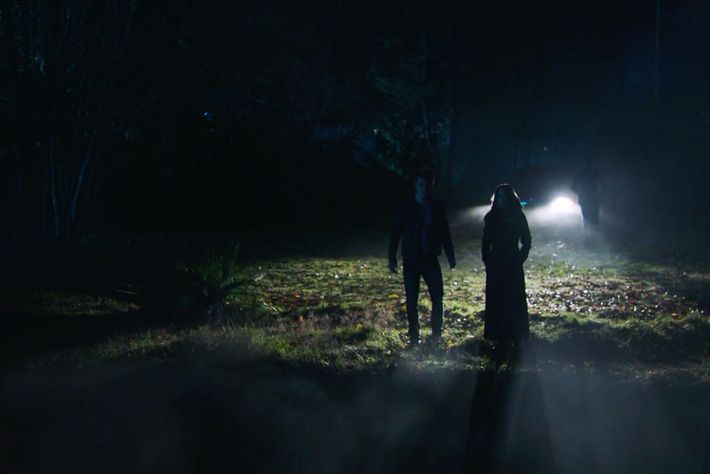
Hermione Lodge summons Archie to a massive bluff overlooking sharp rocks for a secret tête-à-tête.
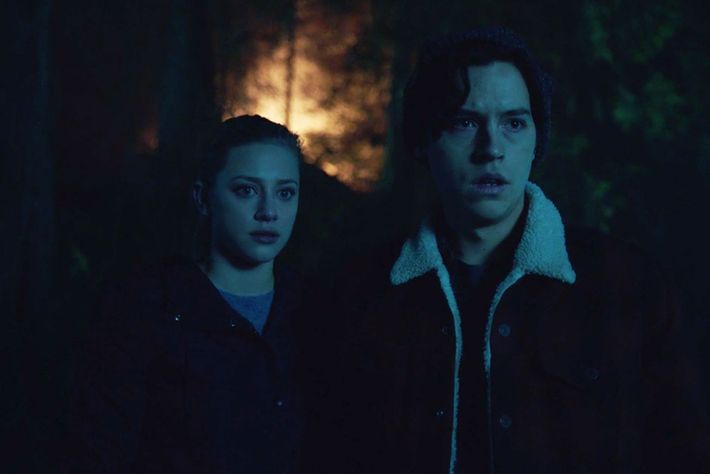
And Betty and Jughead find a swamp deep enough to sink a car.
Further hints come from Riverdale’s famous maple syrup industry. Until recent technological advances, maple syrup production was a side hustle for many rural farmers. For the dynastic Blossom Maple Farms to have the capital of a modern corporate producer like Vermont’s Sweet Tree Holdings, the farm would need to tap 200,000 trees on 26,000 acres of land, or roughly 40 square miles of forest. For perspective, Albany is just shy of 22 square miles.
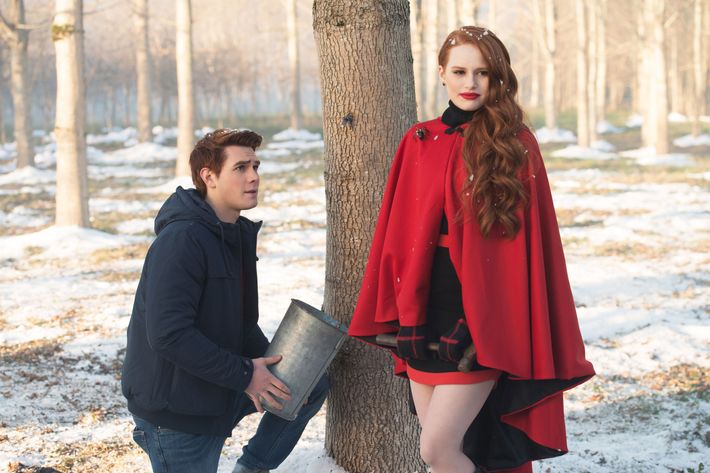
The size of the Blossom farm alone would suggest that Riverdale is a rural town surrounded by miles and miles of privately owned woods. Admittedly, at the time of Clifford Blossom’s death, the business was heavily subsidized by imported heroin from Montreal, but how else was he going to undercut the Federation of Quebec Maple Syrup Producers?
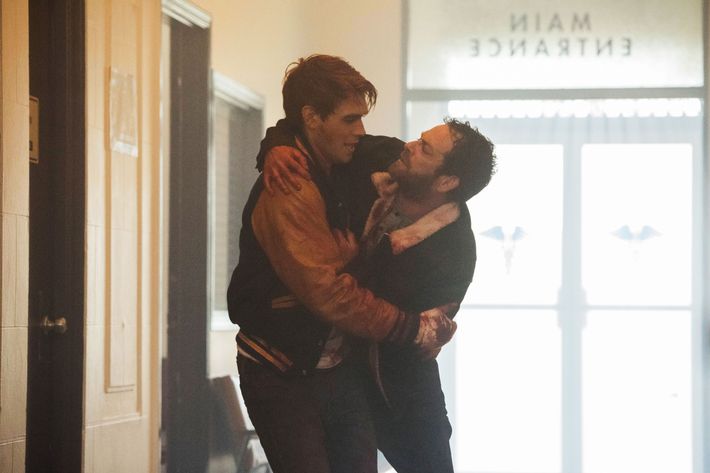
Archie’s frantic drive to the hospital after Fred’s shooting further emphasizes Riverdale’s middle-of-nowhere feel. The ambulance never comes to Pop’s Chock’lit Shoppe — is Archie too terrified to wait or is the emergency-services area too large? — and the hospital is nearly abandoned when Archie drags Fred through the doors.
Conclusion: Bigger than Albany with a river large enough for a ’90s thriller, yet too small for a fully staffed medical center.
Population
Riverdale gives us contradictory hints about the town’s population size. Despite financial issues after Fred’s shooting, Pop’s is the only restaurant in town. (The Southside has the Whyte Worm, but its blatant gang affiliation limits its customer base.)
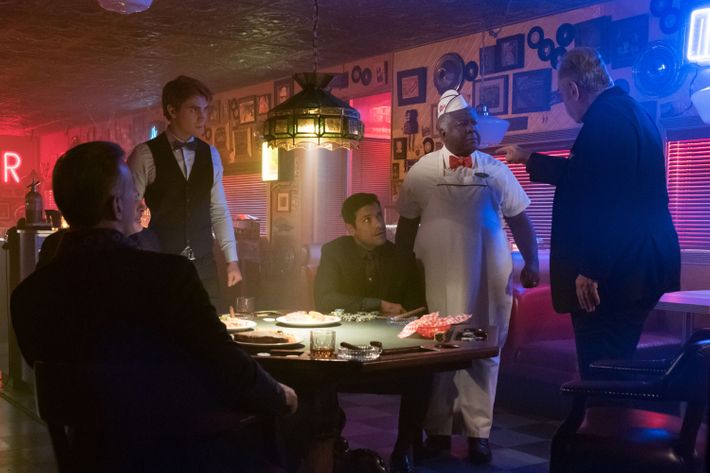
Pop’s is the go-to spot for hot dates, pre-wrestling egg-white omelettes, and private poker games with visiting crime bosses. A more bustling town would have more bars and restaurants, no? The residents of a luxury apartment like the Pembrooke would presumably demand a high-end eatery, at the very least.
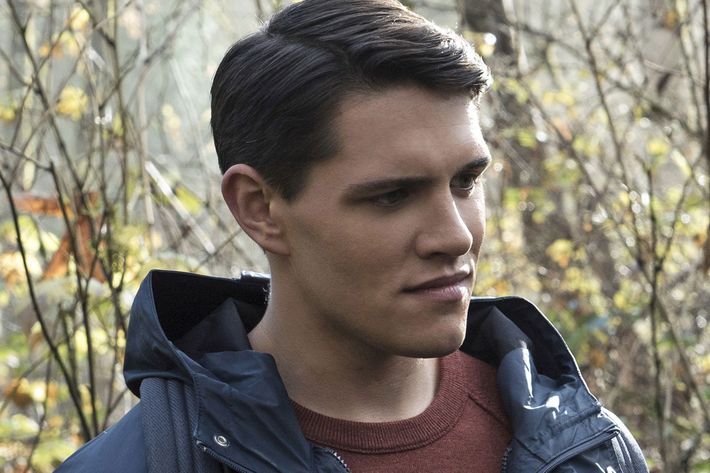
Meanwhile, Fox Forest is home to an active gay cruising scene. As Vulture’s Jackson McHenry asks, “Is Riverdale’s population large enough to support a thriving backwoods sex scene? Do gay men from the local region drive over to Fox Forest to get their kicks?” These are essential questions, ones that go unanswered after Kevin Keller returns to swiping on GrindEm.
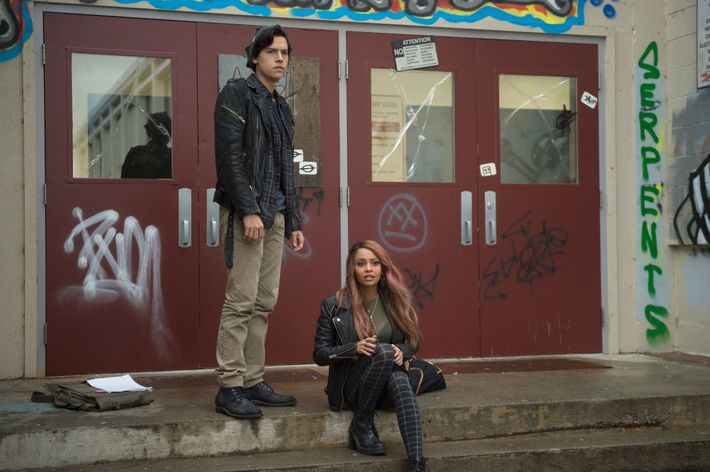
Riverdale’s school system also raises suspicions that the town is not so small. When Mayor McCoy closes Southside High, Principal Weatherbee explains that its students will be transferred to “other schools in the district,” including Riverdale High School. The school district is therefore large enough to need at least three high schools. This suggests that Riverdale is a larger city, perhaps along the lines of Clarkstown, New York (two public high schools, 87,000 residents).
Conclusion: Too small for anything but burgers and milkshakes, but somehow also big enough to be the regional hub for secluded woodland sex and to host a crosstown wrestling rivalry.
Urban Development
And now we reach the Greendale problem. Greendale is repeatedly mentioned as the next town over from Riverdale, yet it is far enough away that: (1) Jughead and Archie must travel for hours to get there, and (2) there is a sketchy rest stop along the way.

How far apart are these two towns? Far enough that Ms. Grundy can openly teach in Greendale after being run out of Riverdale for sleeping with a student, and far enough that Jughead believes Penny Peabody won’t return once he dumps her over the town line. Greendale’s town center must not only be a significant distance from Riverdale, but also large enough to have all the resources its residents need. Otherwise, wouldn’t Ms. Grundy risk running into Riverdale parents while shopping at the regional Mallmart?
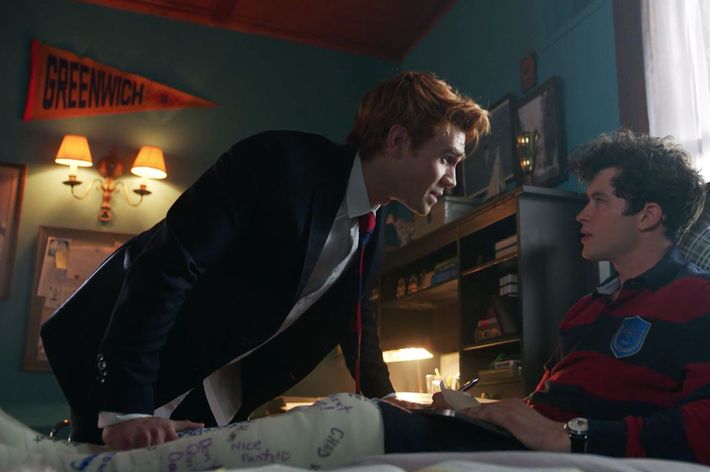
Also worth noting: Riverdale is close enough to New York City that Archie can bop down to Greenwich Prep, beat up Nick St. Clair, and get home in time to meet Veronica for cheese fries at Pop’s. So how rural can it really be?
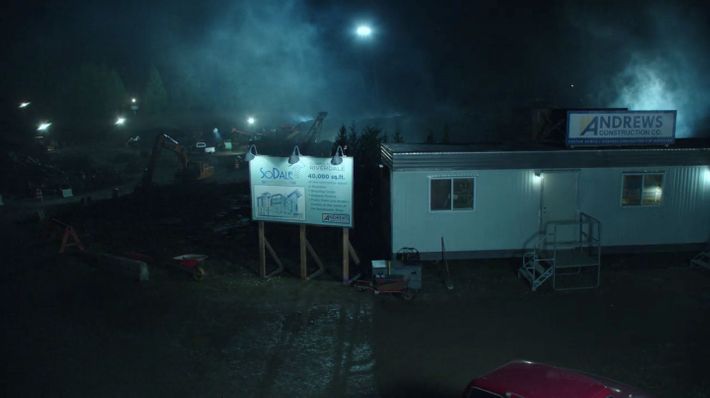
Perhaps the most perplexing clue is the Lodge Industries SoDale project. The Southside development will create 40,000 square feet of retail space, entertainment venues, and modern luxury condos in a bid to spark aggressive gentrification and displace the Southside residents. Yet the town’s primary industries appear to be maple syrup production, construction, teaching, journalism, food service, government, and illegal activity (only one of which pays well), so who exactly will SoDale serve? Is Riverdale close enough to Manhattan to be a commuter city? Are they trying to attract Glamazon’s next headquarters?
Conclusion: Slightly more rural than Croton-on-Hudson, probably? Yet still enough of a midsize city to lure Brooklynites into condos.
With such wide-ranging conclusions, our analysis ultimately raises more questions than it answers. Does Riverdale’s devotion to Pop’s indicate a local quirk or a lack of options? Does Jughead think town lines are actually force fields? What’s the cost for a SoDale condo, and do they have hardwood floors? Like the true identity of the Riverdale Reaper, we may never know for sure.

